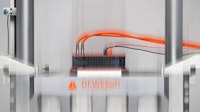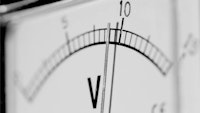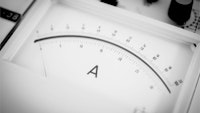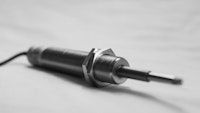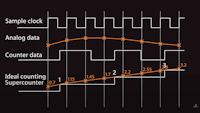Table of contents
Browse categories
Browse authors
 AB
ABAlberto Boffi
 AL
ALAlessia Longo
 AH
AHAl Hoge
 AB
ABAljaž Blažun
 BJ
BJBernard Jerman
 BČ
BČBojan Čontala
 CF
CFCarsten Frederiksen
 CS
CSCarsten Stjernfelt
 DC
DCDaniel Colmenares
 DF
DFDino Florjančič
 EB
EBEmanuele Burgognoni
 EK
EKEva Kalšek
 FB
FBFranck Beranger
 GR
GRGabriele Ribichini
Glacier Chen
 GS
GSGrant Maloy Smith
 HB
HBHelmut Behmüller
 IB
IBIza Burnik
 JO
JOJaka Ogorevc
 JR
JRJake Rosenthal
 JS
JSJernej Sirk
 JM
JMJohn Miller
 KM
KMKarla Yera Morales
 KD
KDKayla Day
 KS
KSKonrad Schweiger
Leslie Wang
 LS
LSLoïc Siret
 LJ
LJLuka Jerman
 MB
MBMarco Behmer
 MR
MRMarco Ribichini
 ML
MLMatic Lebar
 MS
MSMatjaž Strniša
 ME
MEMatthew Engquist
 ME
MEMichael Elmerick
 NP
NPNicolas Phan
 OM
OMOwen Maginity
 PF
PFPatrick Fu
 PR
PRPrimož Rome
 RM
RMRok Mesar
 RS
RSRupert Schwarz
 SA
SASamuele Ardizio
 SK
SKSimon Kodrič
 SG
SGSøren Linnet Gjelstrup
 TH
THThorsten Hartleb
 TV
TVTirin Varghese
 UK
UKUrban Kuhar
Valentino Pagliara
 VS
VSVid Selič
 WK
WKWill Kooiker
What Is A Sensor and What Does it Do?

March 4, 2025
In this article we will discuss the most common and popular sensors used in Data Acquisition (DAQ) measurement applications today, with enough detail so that you will:
See what sensors are and what they do
Learn the basics of how each major sensor type works
Understand the importance of good sensors in industry and research
Are you ready to get started? Let’s go!
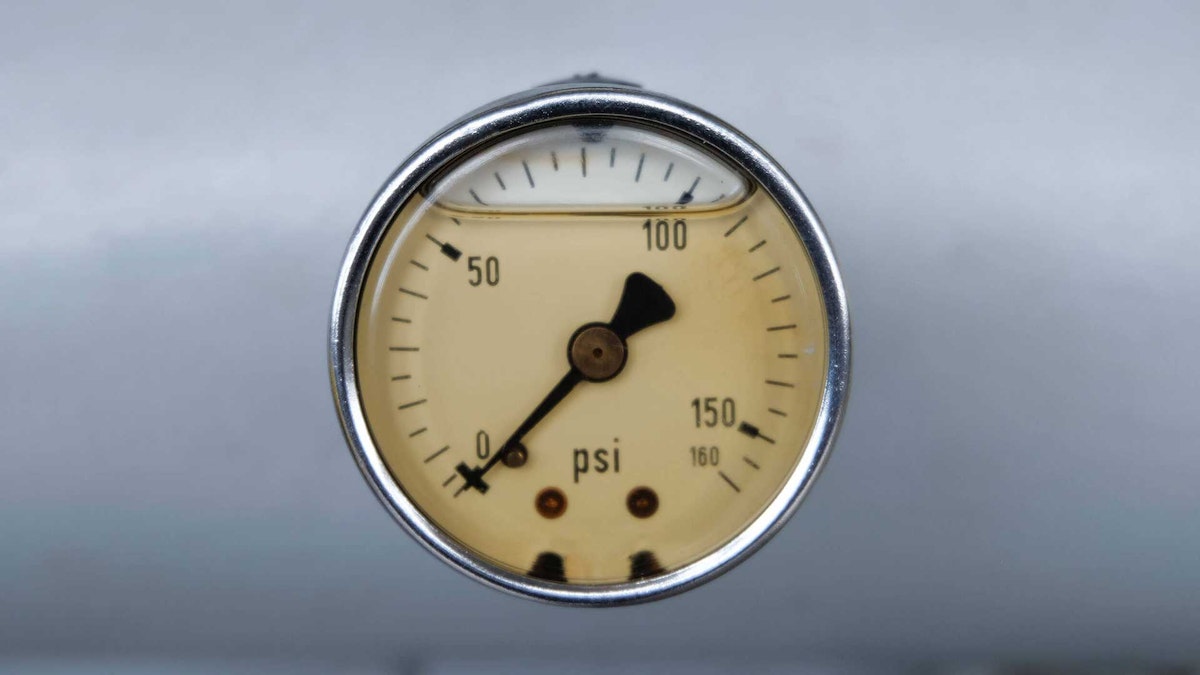
Sensors, also known as transducers, are one of the fundamental building blocks of modern data acquisition systems (aka DAQ or DAS systems). These systems are comprised of the following basic components:
Sensors
Signal Conditioning
Analog-to-Digital Converter (ADC)
And some sort of computer with DAQ software for signal logging and analysis.
What do the sensors do?
A sensor is a device that detects the change in the environment and responds to some output on the other system. A sensor converts a physical phenomenon into a measurable analog voltage (or sometimes a digital signal) converted into a human-readable display or transmitted for reading or further processing.
One of the best-known sensors is the microphone, which converts sound energy to an electrical signal that can be amplified, transmitted, recorded, and reproduced.
Sensors are used in our everyday lives. For example, the common mercury thermometer is a very old type of sensor used for measuring temperature. Using coloured mercury in a closed tube, it relies on the fact that this chemical has a consistent and linear reaction to changes in temperature.
By marking the tube with temperature values, we can look at the thermometer and see what the temperature is. The precision is somewhat limited due to the visual size of the scale markings, but it is sufficient for its intended purpose.
Of course, there is no output (other than the visual one). This kind of thermometer, while useful in the oven, or outside the kitchen window, is not particularly useful for data acquisition applications because, in order to record the values from it, we must have an output that can be digitized. So, temperature sensors have been invented to measure temperature and other physical phenomena and to provide an output that we can display, store, and analyze.
Let’s learn more about the most common and popular sensors in use today.
Types of sensors
There are many types of sensors that have been invented to measure physical phenomenon:
Thermocouples, RTDs and Thermistors: for measuring temperature
Strain gages: to measure strain on an object, e.g. pressure, tension, weight, etc.,
Load cells: for measuring weight and load
LVDT sensors: LVDTs are used to measure displacement in distance
Accelerometers: measuring vibration and shock
Microphones: for capturing sound waves
Current transducers: for measuring AC or DC current
Voltage transformers: for measuring high voltage potentials
Optical sensors: used to detect light, transmit data, and replace conventional sensors
Camera sensors: used to capture single and continuous 2D images
Digital sensors: used for discrete on/off counting, linear and rotary encoding, position measurements, etc.
Positioning sensors (GPS): used to capture the longitudinal, latitudinal position based on GPS, GLONASS, and other satellite positioning systems. Different GPS sensors with different accuracy are available.
and countless more.
Depending on the type of sensor, its electrical output can be a voltage, current, resistance, or another electrical attribute that varies over time. Some sensors are available with digital outputs, whereby they output a series of bytes of scaled or unscaled data. The output of these analog sensors is typically connected to the input of a signal conditioner, which we will discuss in the next section.
Next, we will take a brief look at each of the major sensor types in use today.
Check out Dewesoft's data acquisition systems that can connect any type and any number of sensors to record, store, analyze, and visualize data.
Temperature sensors
The most common and popular sensors for temperature measurement include:
Thermocouples
Thermistors
RTDs (PTx)
Infra-red temperature detectors
Millions of these sensors are at work every day in all manner of applications, from the engine temperature shown on our automobile dashboard, to the temperatures measured in pharmaceutical manufacturing. Virtually every industry utilizes temperature measurement in some way.
Main characteristics of different temperature sensors
| Sensor type | Thermistor | RTD | Thermocouple |
|---|---|---|---|
| Temperature Range (typical) | -100 to 325°C | -200 to 650°C | 200 to 1750°C |
| Accuracy (typical) | 0.05 to 1.5°C | 0.1 to 1°C | 0.5 to 5°C |
| Long-term stability @ 100°C | 0.2°C/year | 0.05°C/year | Variable |
| Linearity | Exponential | Fairly linear | Non-linear |
| Power required | Constant voltage or current | Constant voltage or current | Self-powered |
| Response time | Fast0.12 to 10s | Generally slow1 to 50s | Fast0.10 to 10s |
| Susceptibility to electrical noise | Rarely susceptibleHigh resistance only | Rarely susceptible | Susceptible / Cold junction compensation |
| Cost | Low to moderate | High | Low |
Thermocouples
The thermocouple is the most popular temperature sensor overall due to its relatively low cost and reliability. Thermocouples are based on the Seebeck effect, which demonstrates that when a pair of dissimilar metals in contact with each other at each end are subjected to changes in temperature, they create a small voltage potential.
Pairing different kinds of metals give us a variety of measuring ranges. These are called “types.” A very popular one is Type K, which pairs chromel and alumel, resulting in a wide measuring range of −200 °C to +1350 °C (−330 °F to +2460 °F). Other popular types are J, T, E, R, S, B, N, and C.
Thermocouple types J, K, T, and E are also known as Base Metal Thermocouples. Types R, S, and B thermocouples are known as Noble Metal Thermocouples, which are used in high-temperature applications
The output from a thermocouple must be linearized by the measuring system.
It must also be referenced using the Cold Junction Compensation (CJC). The “hot junction” is the measuring end of the thermocouple assembly, and the other end is the cold junction, where the reference is typically located. Cold Junction Compensation removes the effect of the voltages generated by these cold junctions for more accurate temperature measurement.
Thermocouple challenges
Due to the very small microvolt and millivolt output of these sensors, electrical noise and interference can occur when the measuring system is not isolated. Dewesoft modules tackle this head-on with powerful isolation. There is no better way to reject common-mode voltages that get into the signal chain.
Another way to reduce noise is to place the measuring system as close to the sensor as possible. Avoiding long signal lines is a proven strategy for maximizing signal fidelity and reducing costs. Look at our KRYPTON and IOLITE instruments for best-in-breed solutions here.
An inadequate CJC results in wrong readings. This assembly needs to be protected from ambient temperature changes to provide a solid reference. We use a separate CJC chip for each channel in our CJCs, which are milled from a solid block of aluminum, and precisely assembled to achieve the best possible reference.
Learn more about Dewesoft and thermocouple temperature measurement:
RTD sensors
Compared to the thermocouple, the RTD (Resistance Temperature Detector) is generally more linear and drift-free within its measuring range. However, due to their platinum content and more complex construction, they are more expensive than thermocouples.
You will typically find RTDs used in applications such as pharmaceuticals, where precise temperature measurements must be made over a long time. They don’t range much above 600° C, however, so thermocouples are a better choice for high-temperature “contact” applications.
Unlike the thermocouple which is self-powered, the RTD must be powered by the measuring system.
The RTD measures temperature via electrical resistance which changes in a highly linear fashion with respect to temperature. Although at its core an RTD is a 2-wire sensor, the addition of one or even two more wires (3 and 4-wire hookup) provides better compensation against self-heating and lead wire resistance and is recommended. Dewesoft signal conditioners provide 2, 3, and 4 wire hook-up possibilities.
Types of RTD sensors
Pt100 (“PT” = platinum and “100” = 100Ω at 0°C) and Pt1000 are the most popular variants of the RTD sensors. There are, however, also other types such as Pt200, Pt500, and Pt2000 sensors. Dewesoft data acquisition systems support the connection and measurement of all types of RTD sensors.
As mentioned, RTD hook-up is more complex than a thermocouple, however, Dewesoft DSI-RTD adapters make it easy and convenient to connect your sensors to our measuring systems. Noise is always a consideration for any sensor with small output, but our high isolation inputs are the best prevention imaginable.
Another way to reduce noise is to place the measuring system as close to the sensor as possible. Avoiding long signal lines is a proven strategy for maximizing signal fidelity and reducing costs. Look at our SIRIUS and KRYPTON modular DAQ systems for best-in-breed solutions here.
Thermistors
A thermistor is a piece of semiconductor made of metal oxides that are pressed into a small bead, disk, wafer, or other shape and sintered at high temperatures. Lastly, they are coated with epoxy or glass.
When a current is passed through a thermistor, you can then read the voltage across the thermistor and determine its temperature. A typical thermistor has a resistance of 2000 Ω at 25ºC. 3.9 percent temperature coefficient.
Thermistors are inexpensive and have a fast response, but they are not linear, have a limited range, are relatively fragile unless mounted inside a probe for protection.
Pros and cons of different temperature sensors
| Pros | Cons | Best Application | |
|---|---|---|---|
| Thermocouple | Wide measuring range Self-powered Simple to hook up RuggedInexpensive | Non-Linear CJC Reference Required Not inherently isolated | Thousands of applications in factory, process and industrial temperature monitoring Automotive environmental testingInternal combustion and hybrid engine testing Electrical motor and turbine testing Medical, healthcare monitoring Aerospace engine and control systems testing |
| RTD | Most Stable Most Accurate More Linear than thermocouple | Expensive Current source required Small ∆R Low absolute resistance Self-heating Lead resistance error Response time Vibration resistance Size | Pharmaceuticals, drug manufacturing Food processing Precise scientific measurements |
| Thermistor | High output level Fast response Easy installation Very inexpensive | Output must be converted from change in resistance to a temperature reading Limited range to ~ 200°C Fragile | Electrical circuit monitoring Automotive engine applications Consumer electronics Fire alarms Thermostat control |
Strain gage sensors
When a strain gage (aka “strain gauge”) sensor is properly aligned and glued onto an object under test, and we apply stress to the object by bending or twisting it, the resistance of the strain gauge will change linearly, and we can then measure it. We can also apply mathematics to calculate strain and other forces.
Strain gage applications
Strain and stress measurements
Weight and load measurements
Force measurement
Shock and vibration measurements
Road load data acquisition
Strain gauge sensors pros and cons
| Strain sage advantages | Strain sage disadvantages |
|---|---|
| Sensors themselves are inexpensive | Installation requires specialized knowledge |
| Equally good at static and dynamic measurements | Signal conditioning required is relatively complex |
| Useful across a broad range of applications | Temperature can affect measurements |
Learn more about the strain gages and strain measurement:
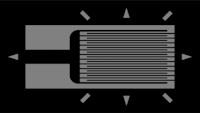
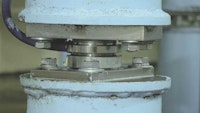
Load cell sensors
If we take another step and permanently affix four strain gauge sensors to a body of a given shape, we create a different sensor called a Load Cell. This is essentially a force or pressure sensor.
The most well-known load cells are the ones installed at the bottom of your digital bathroom scale. When you step onto the scale and compress the load cells, they output a change in resistance, which a microcontroller measures and converts into a value in kg (lbs).
A “bar” or “bending beam” (aka “binocular beam”) load cell is commonly used for industrial weighing applications. One end of the bar is fixed to a structure, while a force is applied to the free end of the sensor (see F in the graphic below).
This force causes the four strain gauges that are built into the top and bottom and each end of the load cell to elongate or compress depending on how much application or removal of the force stresses the load cell structure. These tiny changes in potential from the strain gages are easily converted to weight within our DAQ system.
Load cells are available in many shapes and sizes: some for very tiny spaces and small loads, and others for huge loads of hundreds of thousands of tons, etc.
Load cell applications
Materials testing - weighing parts as they are manufactured for consistency
Aerospace - jet engine thrust, load on wheels and undercarriages
Marine - mooring line tensions
Transportation - torque measurements on engines, highway truck weigh stations
Industrial - tension and force measurements in paper and metals mills
Medical / Healthcare - Infant incubator scales, physical therapy equipment.
Construction - Cable forces in elevators, forces on scaffolding
Entertainment - cable tension tests on cables used to hoist acrobats
Petrochemical - measuring the forces on oil and gas drilling tools
Farming and Ranching - weighing livestock, hopper, tankard and silo weighing
Household / Consumer - digital bathroom scales, kitchen food scales
Load cell sensors pros and cons
| Load cell advantages | Load cell disadvantages |
|---|---|
| Accurate and repeatable measurements | Measurements can be affected by ambient temperature |
| Available from very small loads to hundreds of thousands of kg/pounds | Require relatively expensive strain gage signal conditioning |
| Available in a variety of shapes and sizes for numerous applications | / |
Learn more about load cells and weight measurement:
LVDT sensors
LVDT (linear variable differential transformer) transducers are used to measure linear displacement/position over relatively short distances. They consist of a tube that contains a rod. The base of the tube is mounted to a fixed position, and the end of the rod is affixed to something that moves.
As the rod is pulled out from the tube or slides back in, the sensor outputs a signal that represents the position of the rod from its starting point to its maximum deflection. The rod does not touch the inside of the tube, making it virtually frictionless, and the LVDT itself contains no electronics, making it popular in harsh environments.
LVDT applications
Thousands of Industrial, factory, and process measurement applications
Aerospace - actuator and control surface test
Transportation - monitoring ride height between truck and train body
Petrochemical - positioning of drilling tools
LVDT sensors pros and cons
| LVDT advantages | LVDT disadvantages |
|---|---|
| Highly accurate and repeatable measurements | Measurements can be affected by ambient temperature |
| Long lifespan due to virtually frictionless operation | Require AC excitation |
| Available from very micrometers to ~ 0.7 m (27 in.) | / |
| Absolute output (after power restoration the reading returns to correct value) | / |
| Available in a variety of types and sizes for different applications | / |
Vibration sensors - accelerometers
Accelerometers are used for measuring vibration and shock on machines and basically anything that moves. Their outputs can also be integrated and double-integrated to calculate displacement and velocity.
Accelerometers for making dynamic measurements are normally based on the piezoelectric principle: when a quartz crystal is put under stress it releases a stream of charged ions proportional to the stress. These charge sensors are connected to a charge-type signal conditioner. An even more popular type is IEPE (aka ICP®) sensors, which have an integrated preamplifier, and which require a less expensive signal conditioner.
There are also capacitive-type accelerometers that are based on a different principle and are popular in less demanding industrial applications.
Additionally, there are MEMS-based accelerometers that are heavily used in navigation applications, tablet, and phone orientation, automotive testing, and motion capture.
Accelerometer applications
Shock and vibration tests of all kinds, across all industries
Human body vibration tests
Torsional and rotational vibration tests
Order tracking analysis
Preventive maintenance of machinery
Aerospace - fuselage strain and stress tests, jet and rocket engine vibration test
Transportation - Recording shock and vibration during transporting fragile items
Automotive - body panel shock and vibration, passenger comfort tests, engine vibration
Civil engineering - structural health monitoring
Accelerometer sensors pros and cons
| Accelerometer advantages | Accelerometer disadvantages |
|---|---|
| Easy connection | Sensors can be damaged by too much shock |
| Models available for dynamic and dynamic and static measurements | Charge sensors require signal conditioning that is more expensive than IEPE sensor signal conditioning |
| Available in a variety of types and sizes for different applications | Mounting of sensors requires some specialized knowledge |
| Charge sensors require no external power | / |
| IEPE sensors allow longer cable and less expensive cables and signal conditioning | / |
Learn more about the vibration measurement:
Sound sensors - microphones
In addition to being used in the entertainment industry, microphones are also manufactured to be used in data acquisition applications for analyzing and measuring sound and noise.
Microphones are used in noise and vibration studies, human hearing studies, automotive pass-by noise applications, and thousands more.
Microphone applications
Noise and vibration tests of all kinds, across all industries
Aerospace - Jet engine noise testing
Transportation - Recording shock and vibration during transporting fragile items
Automotive - engine noise, pass-by noise test, brake noise tests
Medical - ambient noise impact studies, hearing testing
Microphone sensors pros and cons
| Microphone advantages | Microphone disadvantages |
|---|---|
| Easy connection - readily available 50Ω BNC cables are used | Relatively expensive sensor |
| Available in a variety of types for different applications | Can be damaged if dropped or mishandled |
| Easy to install | Some mics require phantom power from the signal conditioner |
Current transducers
Along with voltage, a current is one of the most fundamental forms of energy that we measure for monitoring and analytical purposes. Whether it’s testing the quality of the energy of the power grid, the energy consumption of a hybrid electric automobile, or a machine, power is critically important.
For small to medium levels of current, we can use current shunts to convert current to voltage. A shunt is basically a resistor that is installed directly into the circuit where we want to measure the current.
Most of the other kinds of current sensors and transducers on the market operate via induction or a related method whereby they are NOT part of the circuit. This allows much higher currents to be measured. Shown below, is a typical current clamp - a device that detects the electromagnetic field created by a current and measures it. The sensor output is a proportional voltage that our DAQ system can display, store, and later analyze.
There are flexible Rogowsky coils that are easy to install even in places where it is difficult to reach, or when disconnecting the circuit is undesirable. There are also zero flux and fluxgate current sensors for high-accuracy applications, especially those in power quality and related fields. There is a broad range of current sensors and transducers, specifically engineered for all kinds of applications.
Current transducer applications
Energy Production and Distribution tests of all kinds, power quality tests, fossil fuel, and nuclear power plant monitoring
Aerospace - engine and power system testing
Automotive - electrical system test, hybrid, and electric motor tests
Transportation - electric subway cars, third rail and pantograph tests, electrical energy distribution centers
Current transducers pros and cons
| Current transducer advantages | Current transducer disadvantages |
|---|---|
| Clamp models easy to attach to AC cables | Relatively expensive sensor |
| FLEX Rogowski models easy to connect around hard-to-reach places | DC clamps, Rogowsky and Flux sensors require external power |
| Passive and powered clamps for AC applications | / |
| Long-life operation | / |
Learn more about current measurement and analysis:
Voltage transformers - potential transformers
Along with current, voltage is one of the most fundamental forms of energy that we measure for monitoring and analytical purposes. Whether it’s testing the quality of the energy of the power grid, or the energy consumption of a hybrid electric automobile, or a machine, power is critically important.
Nearly every DAQ system and data logger in the world can directly accept low and medium voltages in the ranges of 0-10V or 0-50V, so we do not need any transducer to reduce this voltage. From 50V to approximately 1000V there are signal conditioners available for DAQ systems such as the SIRIUS-HV module, which can directly and safely accept these voltages and internally step them down so that they can be digitized, displayed and stored.
But at higher voltages, or in any case, when life-threatening currents and voltages are present, it is essential to use a high voltage transformer to step down the high voltage and isolate the human test operator from dangerous voltage and current. Such a device is called either a Voltage Transformer (VT) or a Potential Transformer (PT).
The typical PT uses a transformer to step down a very high potential - even higher than 10kV - down to a safe level. It can be placed in series with or across the circuit being monitored. The transformer’s primary winding has a large number of turns compared to the secondary.
Because the DAQ system connected typically has a very high impedance, very little current will flow, therefore the PT’s secondary winding experiences almost no load at all. Most PTs output between 50 and 200V, which nearly every DAQ system can accept.
PTs are available for outdoor usage and those designed for indoor usage. There are also those designed for electrical metering applications. There is also an alternative to the pure transformer type which uses a bank of capacitors after an intermediate transformer to further step down the voltage. These can be less costly because the relatively low step-down ratio intermediate transformer is less expensive than the conventional wound transformer with a high step-down ratio.
A third variant is the optical VT. Optical VTs are usually found in power substations, and not often in DAQ applications. Since they operate on the principle of the Faraday effect, whereby the polarization of light is affected directly by a magnetic field, they are inherently isolated. They are also extremely accurate.
Voltage transformers applications
Energy Production and Distribution high voltage power line testing, synchronizing generators with the main power grid,
Aerospace - engine and power system testing
Automotive - electrical system test, hybrid, and electric motor tests
Transportation - electric subway cars, third rail and pantograph tests, electrical energy distribution centres
Voltage transformers pros and cons
| Voltage transformers advantages | Voltage transformers disadvantages |
|---|---|
| They provide the essential safety to the test engineer and technician | Can be expensive |
| Easy to use | Bulky |
| Most models do not require external power | / |
| Long-life operation | / |
Learn more about voltage measurement and analysis:
Optical sensors
There are several applications for optics within the sensor market today:
Sensing light, IR and UV
Detecting Object Distance, Absence/Presence
Replacement of Conventional Sensors
Sensing light, IR, and UV
There are countless applications for detecting or measuring how much ambient light is around the sensor. The most obvious examples include automatic switches for turning off or on lights: this requires a photodetector.
Even our mobile phones have a light sensor so that they can automatically adjust screen brightness. Most cars today turn on their headlamps automatically when daylight ends, and even turn on/off high-beams at night when an approaching vehicle is detected. Automatic cameras measure the ambient light in order to set the exposure correctly.
The main technologies used for the applications listed above (and more) include photovoltaics, photocells aka photoresistors. They are designed to detect and measure light.
And although most of these sensors are designed for the human visible spectrum, some are designed to work within the infrared (IR) spectrum and even the ultraviolet (UV) spectrum. The IR spectrum is what many robotic systems use, as well as our television remote controls at home. IR radiation cannot be seen by the human eye, but it can be damaging to our eyes in high doses, so detecting it is important for safety purposes among many other applications.
A photocell, also called a photoresistor or LDR (light dependent resistor) can detect the presence and amount of light because of its output changes in proportion with how much light falls on the cell, which has a pattern on it usually made from cadmium sulfide. When no light shines on the cell, its resistance is extremely high. But when light hits the cell its resistance drops in proportion with the amount of light.
Paired with the appropriate signal conditioning, it can be used as an on/off sensor, or to measure the intensity of light. Based on the chemistry of the cell, these small and inexpensive cells can detect all the way into the infrared spectrum.
Detecting object distance, absence/presence
Photodetectors aka proximity sensors, as well as their semiconductor-based cousin, the photodiode, are used to measure the distance to or between objects, and also to sense either the presence or absence of an object.
These are used in a wide variety of industrial applications, including factory process lines, making sure that objects are spaced properly on a belt, or detecting when a new object is in position on an assembly belt. They are also used in automotive applications, detecting the presence of another car or object, as well as alarm systems, and CD and DVD drives.
Replacement of conventional sensors
The next level is to use optics to do the sensing itself, both augmenting and replacing conventional technology sensors like strain gauges, accelerometers, temperature sensors, and more. More about this new trend will be added to this article in the near future, so please check back.
fiber optic transmission
In addition to sensor performance, another advantage is the fiber optic transmission of the sensor data itself compared to using copper cables.
Today, fiber optics are being used instead of electrical transmission to send signals from one point to another. We see this even in our own homes, where fiber is used to bring television and the internet to our homes at transmission speeds that are higher than conventional cable. Fiber optical transmission also provides several distinct advantages over electrical transmission, including:
Immune to magnetic interference
Immune to resistance and heating
Very long signal transmission path without signal loss
Multiple signal wires can be reduced to a single thin cable
Very high bandwidth
Optical sensors applications
Turning on/off lights automatically, alarm systems
Factory process applications, assembly lines, conveyor systems
Robotics, movement direction, and detection
Smoke detectors
Medical sample analysis
Laser range finders, night vision goggles
Automatic door openers
Optical sensors pros and cons
| Optical sensor advantages | Optical sensor disadvantages |
|---|---|
| Fiber Optic transmission is a very high speed and not susceptible to interference from electromagnetic interference and other external forces | Photocells (aka photoresistors) are relatively slow to react to light changes |
| Optical sensors are non-contact and thus long-lived | Requires relatively expensive conditioners |
| Most optical sensors are inexpensive and quite small | / |
Camera sensors
We think of cameras as something only used to take pictures or movies, but they are heavily used in all kinds of industrial and scientific applications as well. Factories use single and continuous image sensor cameras (aka video cameras) to monitor and control a wide variety of fabrication and assembly line processes.
Cameras are also an important part of DAQ system measurement applications. In fact, all of the DAQ systems made by Dewesoft can utilize one or more video cameras and record video in sync with the analog and digital data that they’re recording.
Professional vs. consumer cameras
On one end of the capabilities spectrum, it is possible to use a very inexpensive web camera to add a video to your recordings in some data acquisition (DAQ) systems. But on the other end are industrial-grade cameras with better lenses and the ability to synchronize the framerate of the camera to the process being recorded and/or with the data acquisition sample rate.
For example, the DS-CAM-600 shown here can output up to 336 frames per second at full HD resolution, and up to 600 frames per second if the size of the image is reduced. The camera is also sealed to IP 67 so that it can be used in wet, dusty, and harsh environments. Within Dewesoft DAQ systems, multiple cameras can be used at the same time, providing different viewing angles of the object(s) under test.
When Dewesoft added the common webcam to its DAQ systems in the early 2000s, it completely revolutionized the DAQ market. The next logical step was using industrial cameras whose frame rates could be precisely controlled, and which offered better resolution and speed.
Mechanical mounting and rugged construction are also critical with any sensor, and this has been designed into today’s best industrial machine vision cameras.
Infrared or thermal cameras
Infrared cameras are also sometimes used in scientific and industrial applications and are another important sensor for DAQ applications. Infrared cameras can “see” the temperatures within its field of view, so it’s the perfect way to measure temperature without making any contact.
Infrared is extremely useful in troubleshooting in power plants because power supplies and generators that are hotter than normal indicate a problem. With one look using an IR camera is it easy to see trouble spots.
The same is true with automotive brake testing, where IR cameras make it possible to measure the precise temperature of the brakes in operation and measure accurately how fast they heat up and cool down under a variety of conditions. They are being used more and more in ADAS (advanced driver assistance systems), as they allow the car to detect people and other sources of thermal energy before they come into view, especially at night.
Being able to “see” in a completely different spectrum opens up many possibilities in virtually every test and measurement application today. The best-known maker of IR cameras is FLIR, and Dewesoft has integrated many of their cameras seamlessly into their DAQ systems so that continuous thermographic data can be acquired in sync with the analog and digital sensor data, as shown in the example above.
High-speed cameras
High-speed cameras are useful for capturing extremely fast-changing events. You’ve probably seen slow-motion replays of a balloon popping, or a bullet impacting glass of water - those videos were captured with high-speed video cameras.
High-speed cameras from Photron capture up to 500,000 pictures per second. This data is captured to RAM and then is immediately available for replay. It is possible to synchronize Dewesoft DAQ systems with Photron cameras so that they are both triggered at the same time, and when the test is over, the high-speed video is immediately transferred to the Dewesoft DAQ system and automatically synchronized with the other data. You can replay it in perfect sync with all the data from other sensors.
Summary
Cameras provide a unique context to the data that engineers record, adding a vital layer of information and understanding to countless research and testing applications.
Camera sensor applications
Industrial cameras: Factory automation and process control; automotive pass-by noise tests, wind tunnel tests, brake tests; aerospace control surface tests, escape slide tests, engine tests
InfraRed cameras: energy and power tests, automotive ADAS (advanced driver assistance systems)
High-speed cameras: Ballistics testing; fluid dynamics research; materials testing; automotive crash testing; aerospace wind tunnel testing
Camera sensors pros and cons
| Camera type | Camera sensors advantages | Camera sensors disadvantages |
|---|---|---|
| Industrial cameras | IP67 environmental protection; synchronized output; frame rates up to 600 fps; direct comparison of sensor data with images of the object(s) under test; exchangeable lenses | More expensive than webcams |
| Thermal cameras (IR) | Contactless temperature measurement; direct comparison of sensor data with thermal imagery in real-time | Expensive; IR cannot “see” through glass |
| High-speed cameras | Capturing rates up to 500,000 frames per second | Very expensive; short recording duration due to high sample rates; require either a lot of ambient light on the subject or a DC light |
Digital sensors
When we talk about digital sensors, we refer to those sensors that output discrete values, usually related to the linear or angular position, as well as those sensors that are used to detect when an object is nearby. Let’s take a look at the most commonly used digital sensors.
Proximity sensors
A proximity sensor is able to detect a nearby object without making contact with it, and then output a pulse or voltage signal. There are several types of proximity sensors, which are chosen based on the composition of the object(s) that should be detected.
Rotary encoders
A rotary encoder typically provides excellent angle resolution, as they are available with up to thousands of steps per 360° revolution, which allows for steps far smaller than 1°. Many encoders can also detect the direction of rotation, which is essential in some applications.
Incremental encoders
Incremental encoders report relative changes in position and direction - they do not track absolute position (angle).
Incremental encoders output A and B signals, which indicate changes in movement and direction. Some of them are capable of being “homed” or referenced to a particular position. When this position is reached an additional Z output signal is generated. Incremental encoders are the most common and popular types of encoders.
Linear encoders
A linear encoder measures position along a linear path. Unlike a rotary encoder which has a circular plate inside that allows it to measure shaft position, most linear encoders move along an external scale and determine their position from markings on the scale.
A perfect example is an inkjet printer, which uses a linear encoder to precisely move the printhead back and forth along a scale during printing. High resolution and accuracy are obviously required in this and countless other applications.
The most prevalent sensing technology used with linear encoders is optical, however, there are encoders that also employ magnetic, capacitive and inductive technology. Optical encoders provide the most accuracy and the highest possible resolution, however, care must be taken to prevent contaminants from interfering with their operation.
There are both analog and digital output linear encoders. Dewesoft systems are better suited to digital outputs since they provide A and B outputs very similar to incremental rotary encoders as described in the previous section.
Gear tooth sensors
This angle-based sensor consists of gear with teeth around its circumference plus a proximity sensor of some kind positioned so that when the teeth pass by, they will be detected. This proximity sensor is typically a Hall Effect type, but others are possible. The gear needs to be mounted onto the rotating shaft that we want to monitor.
The Hall effect proximity sensor detects the variation in flux found in the air gap between a magnet and passing ferrous gear teeth. In modern systems, the signal is converted into a binary square wave that is immune to orientation requirements and can follow the gear speed down to a full stop … and detect the first gear tooth that passes immediately upon power on.
Most Hall Effect sensors can detect not only gear teeth passing by, but can also be used to detect holes in disks and plates, ferrous features (e.g., bolts) added to a wide variety of disks and plates, and notches in drive shafts and camshafts.
Digital sensor applications
Proximity sensors: Counting RPM of rotating shaft (tachometer applications); Counting parts passing through production line; Intersection vehicle detection (buried in the road)
Rotary encoders: Speed measurement of motors, conveyors, filling systems, pick and place systems; machine speed, position and distance measurements (textiles, pulp & paper, metals manufacturing)
Linear encoders: CNC machines; Inkjet printers; laser scanners; pick-and-place manufacturing systems; robotics
Gear Tooth Sensors: Measuring RPM of rotating shafts; engine combustion analysis; torsional and rotational vibration studies
Digital sensor pros and cons
| Sensor type | Digital sensor advantages | Digital sensor disadvantages |
|---|---|---|
| Proximity sensors | Very reliable; low cost; capacitive types can also be used to measure thickness; inductive types are not affected by water, mud, etc. | Limited detection distances (~70mm); require external power |
| Rotary encoders | High speed/low latency; high resolution; highly reliable and accurate | RF and EM interference possible with magnetic encoders; light interference possible with optical encoders |
| Linear encoders | Same as with rotary encoders | Same as with rotary encoders |
| Gear Tooth sensors | Typically very rugged and hard to break; very low initial and operating cost | Limited detection distances; limited angle resolution compared to encoders, which can provide hundreds or thousands of steps around the 360° rotation of a shaft |
Summary
We hope that you gained a better understanding of what sensors are, how they work, and how they can be applied across a truly mind-boggling range of monitoring and testing applications. Sensor technology is always moving forward, making these sensors better and better, and finding even more efficient ways of making accurate and repeatable measurements. Sensor-based technology itself is constantly evolving.
Admittedly this article has only scratched the surface. There are many more sensors available today, including ultrasonic sensors that use reflected ultrasonic waves to measure distance, chemical sensors for detecting gases and vapors, and so many more.
Detailed information about various sensors


